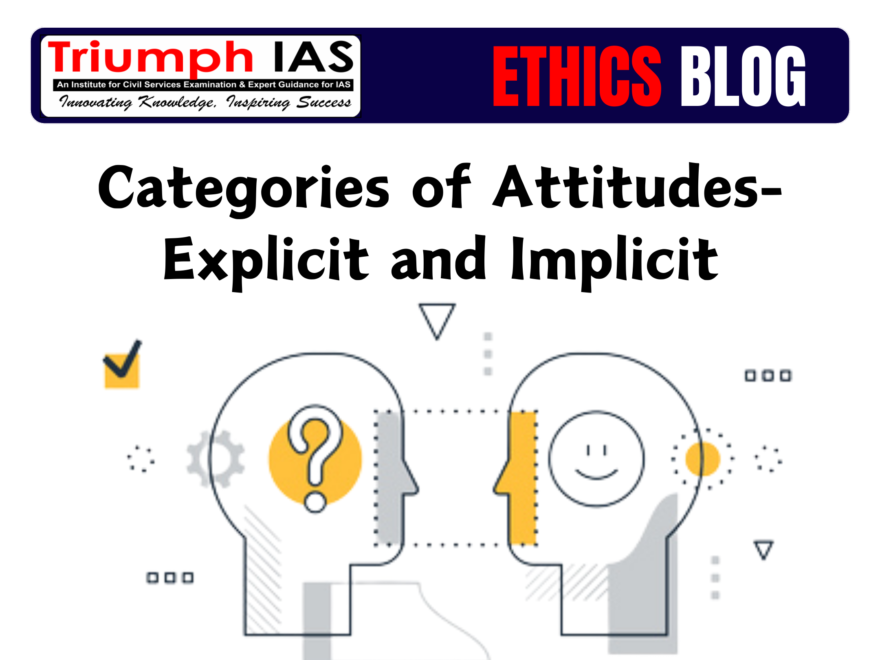
Categories of Attitudes-Explicit and Implicit
[Relevant for Public Ethics, Integrity and Aptitude]

Categories of Attitudes- Explicit and Implicit: We all know what is Attitude. But, attitude itself is studied under two heads depending upon how it affects our external behaviour.
Based on this attitude is divided into two categories as given below:
Explicit & Implicit
The basic difference between these two types of attitudes is conscious (the Chetan maan) and unconscious cognition (the achetaan maan). Recent development in the psychology particularly the psychological analysis technique of Sigmund Freud and Carl Gustav Jung divided the unconscious mind into two vertical slits – the subconscious (avchetan) and the unconscious (achetan). In the Indian Philosophy it has been indicated as – Jagrit, Swapan and Susuptah awastha. There is also the fourth stage as per Indian Philosophers called as the Turiya awastha.
- Explicit attitudes- Result of Conscious Cognition
- Implicit attitudes- Result of Unconscious Cognition
Explicit Attitudes
They are characterized as the attitudes which are the result of conscious cognition, which means person is aware of his or her attitude. Explicit attitudes are mostly affected by recent or more accessible events. These types of attitudes involve more deliberate thinking. Since self is involved more consciously in it so sometimes it is known as ‘self-reported attitude’.
Implicit Attitudes
Implicit attitudes are derived from past memories, which are rooted in unconscious cognition. Sometimes unknowingly we attribute something for object that is implicit attitude which are governed by our past memories (sometimes forgotten memories). We do not deliberately think over it.
With more neural and psychological discoveries, it is coming out as fact that man is controlled more by his implicit rather than explicit attitudes.
In English it is called as unconscious/sub-conscious mind meaning it is below the conscious mind which is a wrong way of expressing. It should be rather called as supra-conscious or super-conscious mind as the conscious mind practically gets subsumed inside this.
Thus, if one can put this in analogy to ice shelf floating in ocean. Explicit Attitude is just the 1/10th of what is visible while Implicit actually controls the remaining 9/10th of one’s Attitude.
Conscious mind is more representative of attitude while sub-conscious mind is more expressive of aptitude.
We are truer to ourself when we behave in consonance with our internal/implicit attitude. The actions as a result of such unison between internal and explicit attitude results in Integrated Action.
संबंधित ब्लॉग…
हमारे पर का पालन करें :
🔎https://www.instagram.com/triumphias
🔎https://www.youtube.com/c/TriumphIAS
🔎https://t.me/VikashRanjanSociology
अधिक ब्लॉग खोजें…
| कार्ल मार्क्स और मैक्स वेबर की तुलना और अंतर | कार्ल मार्क्स- ऐतिहासिक भौतिकवाद |
| आधुनिक भारतीय समाज में महिलाओं की स्थिति | समाजशास्त्र: सामाजिक प्रणाली और पैटर्न चर |

